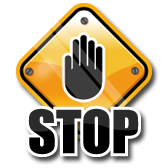|
Temperament Test for Adult Dogs
Before doing a temperament test on a grown dog, you should take some precautions.
* Always evaluate in the presence of another adult. *If you have no background information about the dog at all, you must proceed with caution and stop if the dog shows any signs of resistance.
* If the dog makes no attempts to be friendly, is agitated, has a stiff stance, or is hyper-active, do not attempt to evaluate the dog.
*Do not evaluate an intact (un-neutered) male dog or a female dog in heat.
*Be sure to end the test with the dog as soon as shows signs of being aggressive in any way.
* You will need a collar, a leash, a chair, a few dog toys, a 4-6′ long rope, a 3′ stick or a broom, a piece of paper, canned dog food and a bowl for these tests. |
| |

Responsive |

Shy/Nervous |

Aggressive |
 Independent Independent |
Put the dog on a leash. Test the dog’s reaction to the outside:
Take the dog outside. Try to find squirrels, birds, cats, and other people to expose it to. Call the dog over to look at something. |
Does it walk near you but show a curious interest in these other things? |
Does it cower and run the other way? |
Does it bark furiously and lunge at everything it sees?
 END TEST END TEST |
Does it act very uninterested in the things you show it but very interested in everything else it finds? |
| Come inside, but keep the dog on a leash. Sit in a chair and neutrally observe the dog. |
Does the dog lick or nudge your hand? Does it look at you as if to ask for attention? Does it wag its tail? |
Does the dog cower and avoid and interaction? |
Does the dog mouth you? Does it jump up on you roughly?  END TEST END TEST |
Does the dog strain at the end of the leash toward some distant smell or noise? |
| Talk in a high-pitched, squeaky voice to the dog for 30 seconds. Stop and suddenly go neutral. |
Does the dog respond to your change in behavior? |
Does the dog avoid interacting with you? |
Does the dog jump up, mount, or mouth you?
 END TEST END TEST |
Does the dog not seem affected by your change in behavior? |
| Test the dog’s reaction to toys: Use toys to get the dog excited and playing for 30 seconds. Stop and suddenly drop the toy. |
Does the dog play with you, but also respond to your change in behavior? |
Does the dog avoid interacting with you? |
Does the dog jump up, mount, or mouth you? Does the dog take the toy and try to run off with it?
 END TEST END TEST |
Is the dog unable to change in response to your change in behavior? |
| Test the dog’s prey drive: With the dog on a leash, have another person run by several times, dragging a toy behind and making a “hissing noise”. |
Is the dog more focused on the runner than the toy? Does the dog wag its tail? |
Does the dog act afraid of the runner and the noise? |
Does the dog whine and strain to go after the runner? Does it bark uncontrollably?
 END TEST END TEST |
Does the dog ignore the runner and the mouse? |
| Toss a crumpled piece of paper on the ground. While the dog is sniffing it, yell “Hey! Give me that!” Use a long stick or broom-handle to take the piece of paper away. |
Does the dog stop immediately and come back to you as if to “apologize”? |
Does the dog cower and try to run away? |
Does it grab the paper and try to run off with it?
 END TEST END TEST |
Does it not react at all to your yelling? |
| Pet the dog in a stroking motion from head to toe several times. Observe the dog’s reaction closely. |
Is it accepting and willing to be petted and examined? |
Does the dog sink down under your hand?

|
Does it remain very stiff? Is it sensitive about any parts? Does it utter a growl?
 END TEST END TEST |
Is it completely uninterested in your petting? |
| 7. Test the dog’s responsiveness to food: Give the dog food in a bowl and fill it with canned dog food. Before the dog finishes, use a long stick or broom-handle to pull the bowl away. |
Does the dog wag its tail and look expectantly at you? |
Is it too scared to eat ? |
Does it lift its lips, bite at the stick, bark, growl, or jump up on you to get the food back?
 END TEST END TEST |
Does it act very uninterested in food at all? |